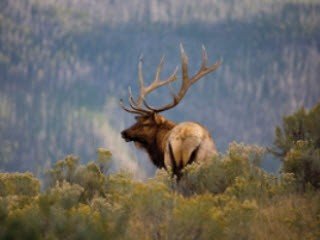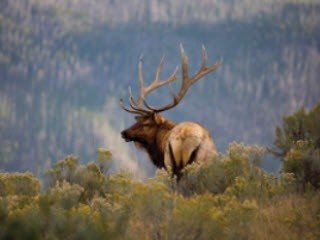 Elk are a tricky customer sometimes while other times they come running in to the call. Quite often the success of a calling setup depends on what has happened before you got there more than hunters often think. Take these situations for example:
Elk are a tricky customer sometimes while other times they come running in to the call. Quite often the success of a calling setup depends on what has happened before you got there more than hunters often think. Take these situations for example:
- Medium sized bull has a couple cows
- Big bull has a big herd
- Small bull knows he can’t compete
In all these situations, a hunter walks into a tough calling challenge. The elk have something to protect, and the best way to protect it is to leave.
Now look at these situations:
- A big bull has a herd and satellite bull/s harassing him
- A big bull doesn’t have any cows and is looking
- A satellite bull thinks he has found a cows only situation
See the quantum difference in how the second group of situations is going to play out in the woods?
The same calling strategy isn’t going to produce the same results in each situation. Figuring out what kind of situation you are in often happens around the campfire that night. Sometimes things happen slower and you are able to put the pieces together. Maybe you see the herd bull chasing a satellite or hear a smaller bull challenging the herd bull. Sometimes you can make guesses based on the response bugles you are getting.
The key is being able to adjust quickly and try different things when needed, before the encounter turns and the elk leave or get wary.
Sometimes you get lucky and a bull comes in running. At other times, you need to read the situation as quickly as possible and react with the right combination of bugles and herd talk. Or maybe cow calls only will make an instant difference. Learning to read the herd situation and make educated guesses about how to call and when to change tactics can improve your success by all that matters, an elk in the freezer.
Each of these situations is different, and it’s often not clear what the situation is. This is why, with very few exceptions, when we get close up with elk cow calling is the first thing out of the bag. Almost without exception bulls want to investigate cows without a bull present this time of year. A herd bull wants to reign in his cows or gather new cows if it’s painless and doesn’t risk his herd. Satellite bulls will also come in to cow calls, often without hesitation.
So does that mean you should leave your bugle at home? No way! Bugles are an awesome, if overused, tool in the woods. Bugles tend to elicit a long range response much better due to volume, and bugles often turn the trick when a big bull has been chasing off satellite bulls. What does too much bugling look like? It’s hard to exactly define too much bugling since a lot of it has to do with the mood of the elk in any given area. Definitely, if you can tell that there are three other groups of hunters bugling in the drainage, it’s time to move or go quiet.
Learning to read the situation you find elk in quickly helps you decide what kind of calling to focus on. Opening with cow calls in close to the elk often leads to success. Knowing when not to bugle can be as helpful as knowing when to bugle. This is the essence of calling elk in different herd situations.








